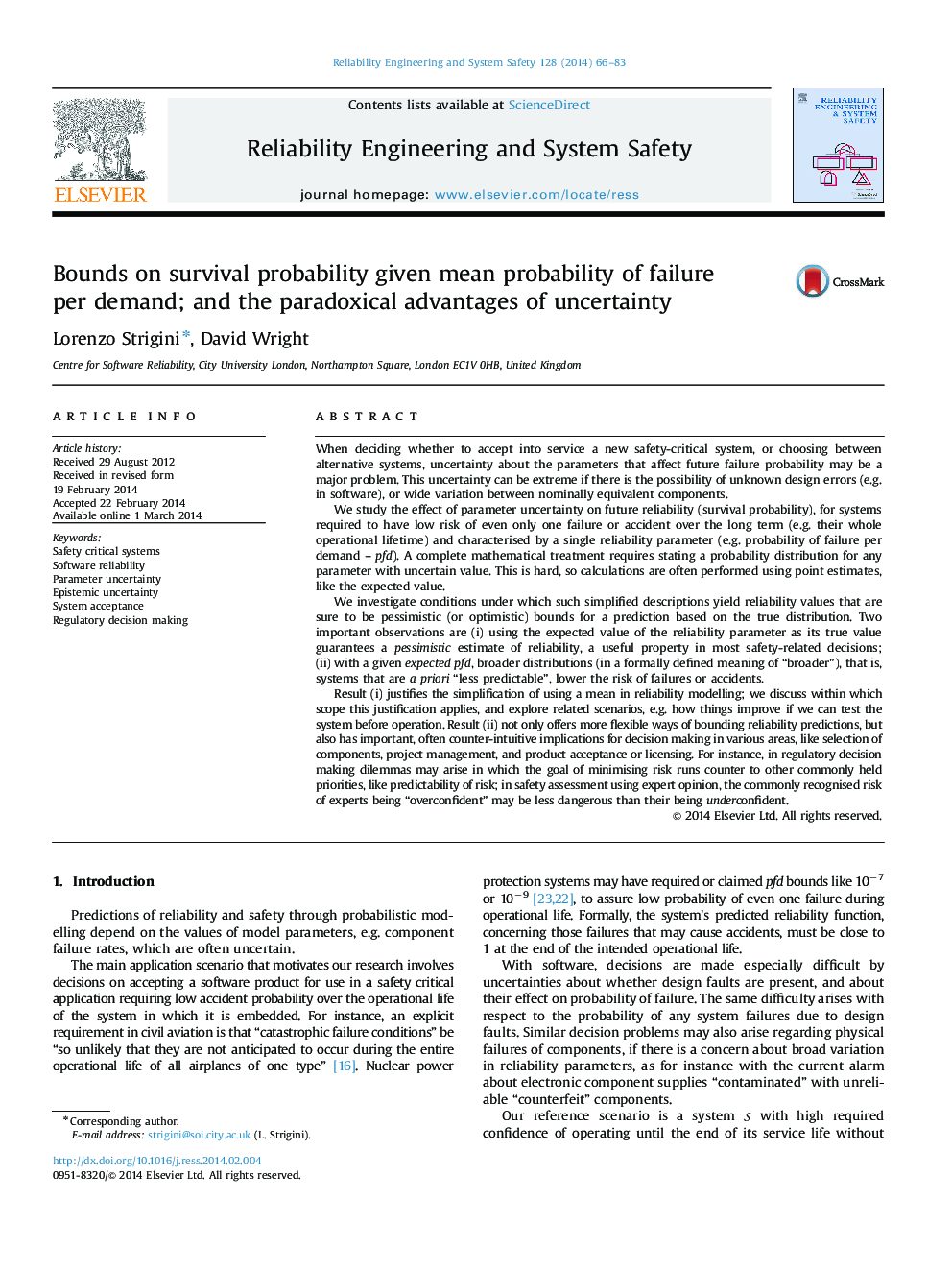| کد مقاله | کد نشریه | سال انتشار | مقاله انگلیسی | نسخه تمام متن |
|---|---|---|---|---|
| 806307 | 1468242 | 2014 | 18 صفحه PDF | دانلود رایگان |
Author-Highlights
• We explore effects of uncertainty on parameters of convex reliability functions.
• Given uncertainty about a parameter, using its mean ensures pessimistic reliability predictions.
• We show that, given this mean, more uncertainty can surprisingly yield higher reliability.
• We discuss consequent practical implications for decision making in reliability and safety.
• These may be counter-intuitive and require scrutiny of the underlying principles.
When deciding whether to accept into service a new safety-critical system, or choosing between alternative systems, uncertainty about the parameters that affect future failure probability may be a major problem. This uncertainty can be extreme if there is the possibility of unknown design errors (e.g. in software), or wide variation between nominally equivalent components.We study the effect of parameter uncertainty on future reliability (survival probability), for systems required to have low risk of even only one failure or accident over the long term (e.g. their whole operational lifetime) and characterised by a single reliability parameter (e.g. probability of failure per demand – pfd). A complete mathematical treatment requires stating a probability distribution for any parameter with uncertain value. This is hard, so calculations are often performed using point estimates, like the expected value.We investigate conditions under which such simplified descriptions yield reliability values that are sure to be pessimistic (or optimistic) bounds for a prediction based on the true distribution. Two important observations are (i) using the expected value of the reliability parameter as its true value guarantees a pessimistic estimate of reliability, a useful property in most safety-related decisions; (ii) with a given expected pfd, broader distributions (in a formally defined meaning of “broader”), that is, systems that are a priori “less predictable”, lower the risk of failures or accidents.Result (i) justifies the simplification of using a mean in reliability modelling; we discuss within which scope this justification applies, and explore related scenarios, e.g. how things improve if we can test the system before operation. Result (ii) not only offers more flexible ways of bounding reliability predictions, but also has important, often counter-intuitive implications for decision making in various areas, like selection of components, project management, and product acceptance or licensing. For instance, in regulatory decision making dilemmas may arise in which the goal of minimising risk runs counter to other commonly held priorities, like predictability of risk; in safety assessment using expert opinion, the commonly recognised risk of experts being “overconfident” may be less dangerous than their being underconfident.
Journal: Reliability Engineering & System Safety - Volume 128, August 2014, Pages 66–83
